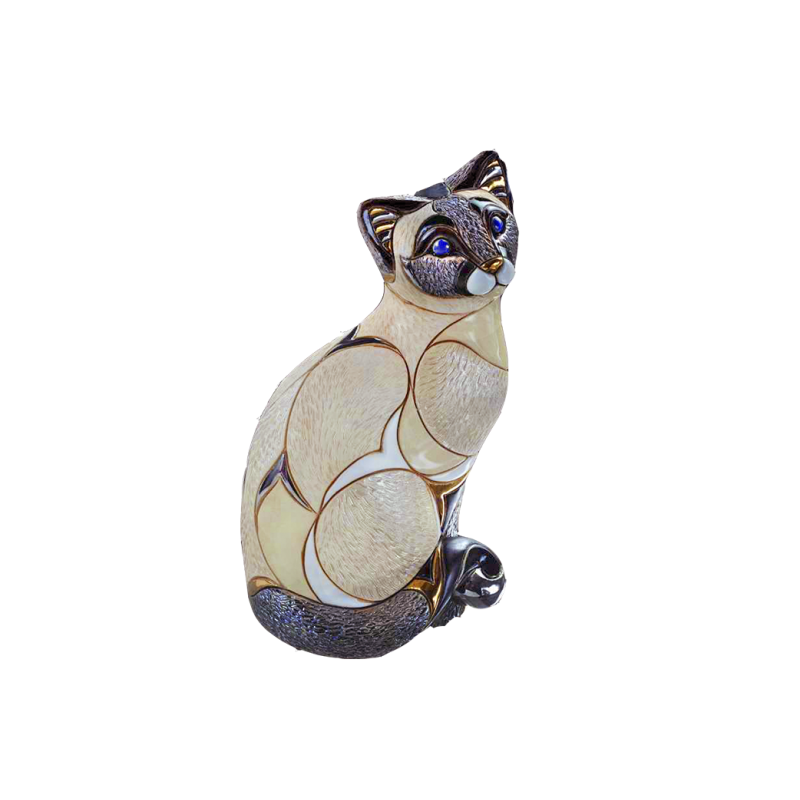
Although the Siamese kitty may look a bit different from its counterparts, Siamese kittens have their own distinctive features that set them apart from their fellow Siamese cats. The distinguishing features of a Siamese kitten include its blue eyes, its almond shaped body with short and rounded legs, its short tail and unique markings that are unique to this breed. This article will discuss some of these unique traits and characteristics of the Siamese cat.
There is some medical history about the development of the Siamese breed that may give us an idea as to why some of them develop certain health conditions later in life. One of these conditions that is sometimes seen in Siamese kittens is called progressive retinal atrophy, or PRAD. As described by some veterinarians, this condition is a condition wherein the kitten develops a blind spot in its central vision at a very early age.
Another disease that some Siamese kitties might be born with is called interdigital cystitis, or IDC. This is a painful condition where the affected area on the skin becomes inflamed because of the growth of new cysts. Some of the most common symptoms of both diseases are severe itching, a burning sensation when the skin comes into contact with clothing or bedding, and a high energy, irritable response to stress. These symptoms can be alarming to owners of Siamese kittens and parents of high energy, demanding adult Siamese.
Like many other breeds of cat, the Siamese has two types of head shape to distinguish it from its counterparts. There is the ‘appleheaded’ or ‘normal’ shaped head of the cat, and the ‘pointed’ or ‘malformed’ shaped head. Many of Siamese cats are actually pointed in the eye, making the cat’s head look pointed. The exception to this is when a Siamese kitten is male. When a male Siamese cat is born, his forehead will begin to tap upward as he grows. However, for all of the other cats, their heads will remain flat and pointed.
Another important factor to consider when it comes to Siamese cats is that their coats will vary greatly in terms of texture and color. Some are completely white, while others will be a different color from the rest of their coat. The majority of Siamese cats are solid colored, with the ears being a creamy color and the face, legs, and tail being various shades of white. Siamese kittens will be completely white, while adult Siamese will have varying amounts of white fur throughout their body.
The patterns that the Siamese possess are some of the most distinctive in the world of cats. They have distinct coat patterns that are either solid, stripes, or mixed. In terms of the purebred Siamese, their coats will be black, brown, red, or a combination of these colours. There have been some concerns over the long-term health effects of Siamese breeding, with some vets claiming that the Siamese cat breed is prone to skin problems. It is very rare for Siamese kittens to have any health problems, and it is thought that the colours attributed to the purebred Siamese are merely due to gene combinations. There is also some evidence that Siamese cats may be more susceptible to cancer due to their unusual coat patterns.
One of the most popular Siamese breeds is the Standard. The standard Siamese cat is a bit older than the typical purebred Siamese cat, having been bred in captivity for many years. The American Kennel Club (AKC) has recognized the standard Siamese as a separate breed from the purebred. While the AKC does not formally recognize cria, or shorthair, Siamese kittens, they do consider them to be a valid breed is bred within the AKC acceptable standards. The most common cria in the US is a solid black cat, to all Siamese cats can be solid colour.
All Siamese kittens will be born with a distinct silver to blue coloration, and you will probably notice this in the early weeks of development. Their eyes should appear deep blue or silver with a slight green glow. New born Siamese kittens will be able to breathe easily, but you should keep in mind that their eyes should be watched closely for any signs of infection. Cria look great when they are full grown, but they will lose their distinctive look as they age.
